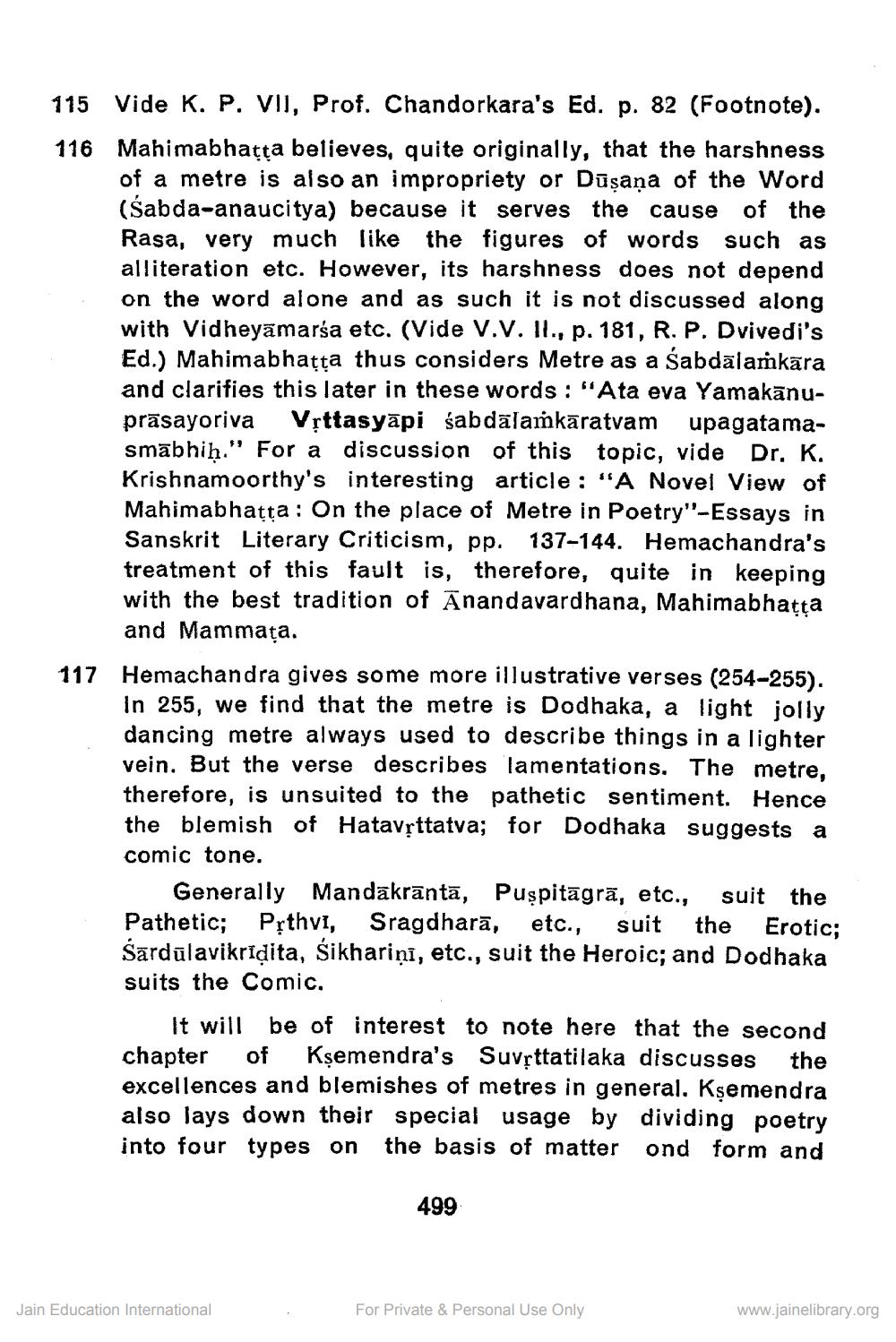________________
115 Vide K. P. VII, Prof. Chandorkara's Ed. p. 82 (Footnote). 116 Mahimabhaṭṭa believes, quite originally, that the harshness of a metre is also an impropriety or Duṣaṇa of the Word (Sabda-anaucitya) because it serves the cause of the Rasa, very much like the figures of words such as alliteration etc. However, its harshness does not depend on the word alone and as such it is not discussed along with Vidheyamarśa etc. (Vide V.V. II., p. 181, R. P. Dvivedi's Ed.) Mahimabhatta thus considers Metre as a Sabdalaṁkāra and clarifies this later in these words: "Ata eva Yamakānuprāsayoriva Vṛttasyāpi śabdālaṁkāratvam upagatamasmābhiḥ." For a discussion of this topic, vide Dr. K. Krishnamoorthy's interesting article: "A Novel View of Mahimabhatta: On the place of Metre in Poetry"-Essays in Sanskrit Literary Criticism, pp. 137-144. Hemachandra's treatment of this fault is, therefore, quite in keeping with the best tradition of Anandavardhana, Mahimabhaṭṭa and Mammata.
117
Hemachandra gives some more illustrative verses (254-255). In 255, we find that the metre is Dodhaka, a light jolly dancing metre always used to describe things in a lighter vein. But the verse describes lamentations. The metre, therefore, is unsuited to the pathetic sentiment. Hence the blemish of Hatavṛttatva; for Dodhaka suggests a comic tone.
Generally Mandakranta, Puspitagra, etc., suit the Pathetic; Pṛthvi, Sragdhara, etc., suit the Erotic; Śārdūlavikrīḍita, Sikhariņi, etc., suit the Heroic; and Dodhaka suits the Comic.
It will be of interest to note here that the second chapter of Kṣemendra's Suvṛttatilaka discusses the excellences and blemishes of metres in general. Kṣemendra also lays down their special usage by dividing poetry into four types on the basis of matter ond form and
Jain Education International
499
For Private & Personal Use Only
www.jainelibrary.org




